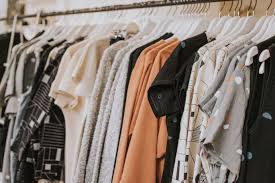The Evolution of Clothing: From Function to Fashion
Clothing has been an essential part of human existence since the dawn of civilisation. Initially serving as a means of protection against the elements, clothing has evolved over time to become a symbol of cultural identity, social status, and personal expression.
In ancient times, clothing was primarily made from natural materials such as animal skins, furs, and plant fibers. The primary function was to provide warmth and protection from the environment. As societies developed and trade routes expanded, fabrics like silk, cotton, and wool became more accessible, leading to the development of more intricate and diverse clothing styles.
Throughout history, clothing has played a significant role in defining social hierarchies and cultural norms. In many societies, certain garments were reserved for royalty or religious leaders to signify their status and authority. Similarly, specific dress codes were enforced to distinguish between different social classes or professions.
With the rise of globalisation and mass production in the modern era, clothing has become more accessible than ever before. Fashion trends change rapidly, influenced by celebrities, designers, and social media. People use clothing not only for practical purposes but also as a form of self-expression and creativity.
Today, the fashion industry is a multi-billion dollar global enterprise that shapes trends and influences consumer behaviour. Sustainable fashion practices are gaining momentum as people become more conscious of the environmental impact of fast fashion. From haute couture runways to streetwear brands, clothing continues to evolve as a reflection of society’s values and aspirations.
Despite its ever-changing nature, one thing remains constant – clothing is more than just fabric stitched together. It is a powerful form of communication that transcends language barriers and connects people across cultures and generations.
As we look towards the future of clothing, it is clear that its evolution will continue to be driven by innovation, sustainability, and inclusivity. Whether we wear traditional attire that honours our heritage or don contemporary designs that push boundaries, our choice of clothing will always be a statement about who we are and what we value.
Top 5 Frequently Asked Questions About Fashion and Clothing Choices
- What is the latest fashion trend?
- How do I choose the right size of clothing?
- What are the best fabrics for hot weather?
- How can I care for delicate clothing items?
- Where can I find sustainable and eco-friendly clothing options?
What is the latest fashion trend?
The question “What is the latest fashion trend?” is a common inquiry among those seeking to stay current and stylish in their clothing choices. Fashion trends are ever-evolving, influenced by a myriad of factors such as cultural movements, runway shows, celebrity endorsements, and social media influencers. From bold colours and statement prints to minimalist designs and sustainable fashion, the latest trends reflect the dynamic nature of the industry. Keeping an eye on fashion magazines, online platforms, and designer collections can provide insights into what’s hot in the world of fashion at any given moment.
How do I choose the right size of clothing?
When it comes to choosing the right size of clothing, it’s essential to consider both your body measurements and the sizing guidelines provided by the brand or retailer. Start by taking accurate measurements of your chest, waist, hips, and inseam to determine your body size. Compare these measurements to the size chart provided by the brand, as sizing can vary between different manufacturers. Additionally, pay attention to any specific fit notes or recommendations given for each garment, such as whether it runs true to size or if it has a loose or tailored fit. Trying on clothing whenever possible is also a helpful way to ensure a proper fit and comfort before making a purchase.
What are the best fabrics for hot weather?
When it comes to dressing for hot weather, choosing the right fabrics can make a significant difference in staying cool and comfortable. Breathable and lightweight fabrics such as cotton, linen, and bamboo are often considered the best choices for hot climates. Cotton is a natural fibre that allows air to circulate around the body, helping to wick away moisture and keep you cool. Linen is another excellent option known for its breathability and ability to absorb sweat, making it ideal for humid conditions. Bamboo fabric is gaining popularity for its softness, moisture-wicking properties, and sustainability. Opting for these fabrics can help you beat the heat while maintaining a stylish and comfortable look during hot weather.
How can I care for delicate clothing items?
Caring for delicate clothing items requires special attention and gentle handling to ensure their longevity and pristine condition. To properly care for delicate garments, it is recommended to hand wash them using a mild detergent in cold water, as machine washing can cause damage. Avoid wringing or twisting the fabric and instead gently squeeze out excess water before laying the item flat to dry. When ironing delicate clothing, use a low heat setting and place a cloth between the iron and the garment to prevent direct contact. Additionally, store delicate items separately from heavier fabrics to avoid snagging or stretching. By following these care instructions, you can preserve the beauty and quality of your delicate clothing pieces for years to come.
Where can I find sustainable and eco-friendly clothing options?
For those seeking sustainable and eco-friendly clothing options, there are several avenues to explore. Many ethical fashion brands and online retailers now focus on offering clothing made from organic, recycled, or environmentally friendly materials. Shopping at local thrift stores or vintage shops is another excellent way to find pre-loved clothing items that reduce waste and promote sustainability. Additionally, attending eco-conscious fashion events or markets can provide opportunities to discover unique and environmentally responsible clothing pieces. By actively seeking out these alternatives, individuals can make a positive impact on the environment while still expressing their personal style through conscious fashion choices.

